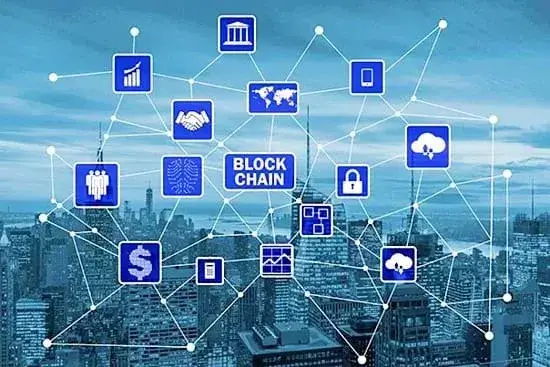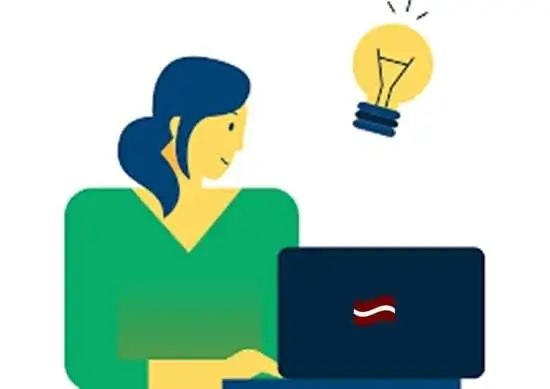Cybersecurity Advice, Introduction to Cybersecurity in 2024.
As we enter 2024, the landscape of cybersecurity continues to evolve at a rapid pace, driven by technological advancements and the increasing connectivity of devices.
Cyber threats are becoming more sophisticated, with hackers leveraging new tools, including generative AI, to execute more effective scams.
This shift highlights the importance of staying informed about emerging trends in online safety and the need for individuals and organizations to adopt proactive measures to defend against these threats.
Cybersecurity Advice.
One significant trend observed in 2024 is the rise of generative AI-assisted scams.
These advanced scams utilize artificial intelligence to create convincing narratives and imitate legitimate communication channels, making it more difficult for users to discern real messages from fraudulent ones.
For example, cybercriminals can generate emails, text messages, or even audio and video content that closely resembles that of trusted contacts or institutions.
As a result, it is imperative for individuals to be educated about the signs of such scams and to employ critical thinking when evaluating unsolicited communications.
 Furthermore, the growing reliance on remote work has created a more complex security environment.
Furthermore, the growing reliance on remote work has created a more complex security environment.
Businesses are now faced with the challenge of protecting sensitive information across various platforms and devices.
The adoption of cloud solutions, while beneficial for operational efficiency, also exposes new vulnerabilities that cybercriminals may exploit.
Organizations must implement comprehensive cybersecurity strategies, including employee training and updated security protocols, to safeguard data effectively.
In light of these challenges, understanding the current cybersecurity landscape is more crucial than ever.
Individuals and businesses must take a proactive stance in their cybersecurity practices, staying updated on the latest trends and threats to ensure robust protection against increasingly creative cyber attacks.
Emphasizing vigilance and preparedness is essential to navigating the multifaceted realm of online security in 2024.
Understanding Generative AI-Assisted Scams.
As technology continues to advance, so too do the tactics employed by cybercriminals.
One of the emerging tools in their arsenal is generative artificial intelligence (AI), which has transformed the landscape of online scams.
Generative AI refers to algorithms that can create text, images, and other content that closely resembles human-generated material.
This capability allows scammers to craft highly personalized and convincing messages, making it increasingly difficult for individuals to discern legitimate communications from fraudulent ones.
 Scammers leverage generative AI to create phishing emails, fake social media profiles, and even sophisticated video calls that can imitate real individuals.
Scammers leverage generative AI to create phishing emails, fake social media profiles, and even sophisticated video calls that can imitate real individuals.
By analyzing vast amounts of data, these AI models can generate content that resonates with specific targets, exploiting human emotions and biases.
For example, a scammer may use an AI-generated email that mimics the style and tone of a trusted colleague, thus increasing the likelihood of a successful deception.
This targeted approach capitalizes on urgency or fear, prompting users to act without thorough verification.
Psychologically, these scams are effective because they exploit cognitive biases.
The familiarity of the generative AI-created content can lead individuals to trust the source more readily than they would a traditional scam.
Furthermore, as these AI systems evolve, so do their outputs, making them more adaptable and challenging to detect.
It is crucial for individuals to remain vigilant and skeptical of unexpected communications, especially those that urge immediate action or request sensitive information.
In a digital era where generative AI can craft highly convincing messages, awareness and education become vital defenses against these sophisticated schemes.
By understanding the mechanics behind these technologies and the psychological tactics employed, individuals can better protect themselves from falling victim to generative AI-assisted scams.
Recognizing the Signs of Cybercrime
In today’s digital landscape, awareness is crucial for safeguarding personal and sensitive information.
Recognizing the signs of cybercrime can play an essential role in avoiding potential threats.
Cybercriminals often employ various tactics to exploit vulnerabilities, making it imperative to be vigilant.
Phishing attempts are one of the most prevalent methods cybercriminals use to deceive individuals.
These scams often come in the form of unsolicited emails or messages that appear to be from reputable sources, such as banks or well-known companies.
These communications frequently urge recipients to click on suspicious links or provide sensitive information. It is vital to scrutinize such messages carefully.
Look for inconsistencies, such as grammatical errors or unusual sender addresses, which may indicate a phishing attempt.
Another tactic employed by cybercriminals is social engineering, which involves manipulating individuals into divulging confidential information.
Attackers may impersonate coworkers, technical support, or even authority figures to gain trust.
This manipulation often occurs through various communication channels, including email, phone calls, or social media.
Be cautious when receiving requests for sensitive data and verify the identity of the person making the request.
Always contact the individual through a known or official channel rather than responding directly to their inquiry.
Additionally, suspicious behavior is a clear indicator of potential cybercrime.
Monitor your online accounts for unexpected changes, such as unfamiliar login attempts or unauthorized transactions.
If your devices exhibit unusual activity, such as slow performance, unexpected pop-ups, or unfamiliar applications, these may be signs of a breach.
Recognizing these early warning signs can provide the opportunity to take proactive measures and reinforce cybersecurity protocols before serious repercussions occur.
Best Practices for Personal Cyber Hygiene.
In today’s digital landscape, maintaining strong personal cybersecurity is crucial for protecting sensitive information from threats.
One of the primary methods for securing personal data is effective password management.
Users should create complex passwords that are at least 12 characters long, including a mix of uppercase and lowercase letters, numbers, and special symbols.
Utilizing a password manager may simplify the process of generating and storing unique passwords for different accounts.
This practice not only mitigates the risk of password reuse but also enhances overall security.
An essential component of personal cyber hygiene is the implementation of multi-factor authentication (MFA).
MFA provides an additional layer of security beyond just a password by requiring users to confirm their identity through a second factor, such as a text message or authentication app.
This reduces the likelihood of unauthorized access, even if a password gets compromised. It is advisable to enable MFA on all sensitive accounts, including email, banking, and social media platforms.
Regular software updates play a crucial role in maintaining cybersecurity. Keeping operating systems, applications, and devices up to date ensures that users benefit from the latest security patches and features.
Outdated software is a common target for cybercriminals, as they exploit known vulnerabilities.
Users should set their systems to automatically update whenever possible, which minimizes the risk of exposure to potential threats.
Furthermore, understanding privacy settings across various platforms enhances personal cyber hygiene.
Social media users should review their privacy settings periodically, limiting who can view their information and how it is shared.
Similarly, familiarizing oneself with app permissions can prevent unnecessary data collection and possible misuse.
By prioritizing these cybersecurity practices, individuals can substantially reduce their risk while navigating the online world.
Protecting Your Home Network.
In an increasingly interconnected world, the security of your home network is paramount to safeguarding your personal information.
A well-protected network acts as the first line of defense against cyber intrusions. To ensure your home network is secure, it is essential to start with your router.
Changing the default username and password is a crucial step; many routers come with easily guessable credentials that cybercriminals can exploit.
Opt for a strong, unique password that combines letters, numbers, and symbols to enhance security.
Another important measure involves updating your router’s firmware regularly. Router manufacturers periodically release updates that address vulnerabilities, and installing these updates is vital for maintaining robust security.
Additionally, disabling features such as WPS (Wi-Fi Protected Setup) can prevent unauthorized access, as this feature can provide easy entry points for potential intruders.
 The use of a Virtual Private Network (VPN) further enhances your home network security.
The use of a Virtual Private Network (VPN) further enhances your home network security.
A VPN encrypts your internet traffic, masking your IP address and making it more difficult for hackers to intercept your data. This is particularly beneficial when using public networks, but it also provides an extra layer of security for your home environment.
Securing Internet of Things (IoT) devices is another crucial aspect. Many household devices can serve as entry points for cyber threats if not adequately protected.
To safeguard these devices, ensure they have strong passwords and are regularly updated. Additionally, placing IoT devices on a separate network can prevent intrusions that could compromise your primary devices.
Overall, taking these proactive measures can significantly enhance your home network security, minimizing the risk of cyber intrusions and ensuring a safer online experience in 2024.
Cybersecurity for Remote Workers.
As remote work continues to shape the professional landscape, cybersecurity for remote workers becomes increasingly paramount.
With the flexibility of working from home or other locations, employees often encounter distinct challenges that require robust cybersecurity measures.
One of the primary concerns is securing home office setups, which are often not equipped with the same level of protection as traditional corporate networks.
To mitigate risks, remote workers should create a secure workspace.
This includes using a dedicated device for work-related tasks that is not shared with personal users.
Ensuring that this device has updated antivirus software and a reliable firewall is essential for defending against cyber threats.
Additionally, implementing strong passwords and utilizing a password manager can significantly enhance security, as weak passwords are a common vulnerability.
Another critical aspect is the use of secure connections. Remote workers must avoid public Wi-Fi networks when accessing sensitive work-related information.
Instead, it is advisable to use a virtual private network (VPN) to encrypt internet traffic, ensuring data privacy and protection from cyber attacks.
These technologies help safeguard communication channels, making it more difficult for unauthorized entities to gain access to confidential information.
Furthermore, ensuring that work-related data remains protected in a non-traditional workspace necessitates regular training on phishing scams and other cyber threats.
Employees should be aware of common social engineering tactics and learn to recognize suspicious emails or messages.
Applying regular updates to all software and applications used for work is also a sound practice, as it helps patch vulnerabilities that could be exploited by cybercriminals.
By implementing these tailored cybersecurity strategies, remote workers can contribute significantly to safeguarding their organization’s digital infrastructure while enjoying the benefits of flexible working arrangements.
Understanding Phishing and How to Avoid It.
Phishing is a prevalent cybersecurity threat that involves deceiving individuals into revealing sensitive information, such as passwords, account numbers, or personal details.
Cybercriminals employ a variety of tactics to execute these attacks, which can take several forms, including email phishing, spear phishing, and vishing (voice phishing).
Understanding these different types of phishing is crucial for staying safe online in 2024.
Email phishing is the most common form of attack, where scammers send emails that appear to be from reputable sources, aiming to lure recipients into clicking malicious links or downloading harmful attachments.
Spear phishing, on the other hand, targets specific individuals or organizations, often using personalized information to make the attack appear more legitimate.
Vishing involves phone calls where attackers impersonate legitimate entities to extract sensitive data from victims. Recognizing these threats is key to defending against them.
To mitigate the risk of falling victim to phishing scams, there are several actionable steps individuals can take.
First, verify the sender’s email address before engaging with any correspondence that requests personal information.
Often, attackers will use email addresses that contain subtle changes to well-known institutions, which can be easily overlooked.
Additionally, analyzing URLs before clicking on them is important; hover over links to preview the destination and ensure it corresponds with the expected website.
Another effective strategy for avoiding phishing attacks is to utilize email filters that can identify and redirect potential threats to a spam or junk folder.
These filters use advanced algorithms to recognize patterns associated with phishing attempts.
Moreover, being aware of common phishing red flags, such as poor spelling and grammatical errors, can help individuals discern legitimate communications from fraudulent ones.
Taking these precautions will increase your online safety and help to combat phishing attacks effectively.
The Importance of Cybersecurity Education.
In the digital era, cybersecurity education has become paramount for individuals and organizations alike.
As cyber threats continue to evolve in complexity and frequency, staying informed through continuous education is essential for safeguarding sensitive information.
This necessity extends beyond IT professionals; everyone, regardless of their technical expertise, must understand the fundamentals of cybersecurity to mitigate risks effectively.
There are numerous resources available to aid in cybersecurity education, ranging from online courses to workshops and seminars.
Various educational institutions and platforms, such as Coursera, Udemy, and even universities, offer comprehensive programs tailored to different skill levels.
These courses equip learners with the knowledge needed to recognize potential threats, such as phishing scams, malware, and data breaches.
Moreover, many organizations provide training programs that focus on best practices, ensuring that employees can identify and respond to security threats promptly.
In addition to formal education, individuals should engage with up-to-date cybersecurity news and reports.
Following reputable cybersecurity blogs, subscribing to newsletters, and joining online forums can help users remain informed about the latest trends and threats in the cyber landscape.
By understanding common attack vectors and the strategies attackers use, individuals can better shield themselves against potential breaches.
Furthermore, employees in organizations should participate in regular training sessions to reinforce their knowledge and skills.
Companies can implement simulated phishing exercises and regular drills to assess and enhance their workforce’s readiness to handle cyber threats.
This proactive approach not only empowers individuals but also promotes a collective security culture within organizations.
As cybersecurity threats become more sophisticated, ongoing education serves as a critical line of defense against cybercrime.
Empowering Yourself Against Cyber Crime.
As we navigate the increasingly complex digital landscape in 2024, remaining vigilant about cybersecurity has never been more critical.
Through interviews with cybersecurity experts, we gathered invaluable insights and practical tips that can significantly enhance our online safety.
The experts emphasized the importance of understanding that every individual plays a crucial role in the broader fight against cybercrime.
By staying informed and taking proactive measures, we can protect not only ourselves but our communities as well.
Some of the essential takeaways include the necessity of using strong, unique passwords and enabling two-factor authentication wherever possible.
These simple actions can create formidable barriers against unauthorized access.
Additionally, regularly updating software and being cautious about clicking on unknown links can greatly reduce the risk of falling victim to phishing attacks or malware.
Awareness of potential threats allows individuals to identify suspicious activities and respond accordingly.
Moreover, fostering an open dialogue about cybersecurity within families and among friends can help disseminate crucial information and strategies.
Encouraging discussions about personal experiences with online threats can lead to a better understanding of potential vulnerabilities and reinforce the importance of digital safety.
Sharing these insights not only empowers oneself but also encourages others to adopt safer online practices.
In conclusion, by implementing the recommended strategies and nurturing a culture of awareness and vigilance, we can collectively build a more secure online environment.
Stay informed, be proactive, and remember that cybersecurity is not just an individual concern but a communal responsibility.
By working together, we can create networks of safety that extend beyond our personal devices and into our communities.
You Good Day!





